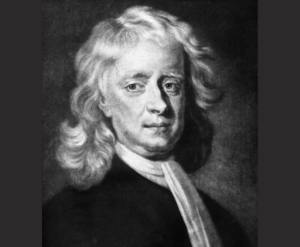1687 – Newton’s Principia: Laws of Motion and Universal Gravitation

Introduction
On July 5th, 1687, the scientific world witnessed a momentous event when the Royal Society in England published Isaac Newton’s magnum opus, “Philosophiæ Naturalis Principia Mathematica,” commonly known as “Principia.” This groundbreaking work laid the foundation for modern physics and forever changed our understanding of the physical universe. In this article, we delve into the significance of Newton’s laws of motion and his universal theory of gravitation, exploring how they shaped the course of scientific history.
Newton’s Laws of Motion: The Basis of Classical Mechanics
Unraveling the Mysteries of Motion
Newton’s Principia introduced three fundamental laws of motion, which became the cornerstones of classical mechanics:
1. Newton’s First Law of Motion (Law of Inertia): An object at rest will remain at rest, and an object in motion will continue in a straight line at a constant speed unless acted upon by an external force. This law dispelled the notion of an inherent need for continuous force to sustain motion, paving the way for understanding inertia.
2. Newton’s Second Law of Motion: The acceleration of an object is directly proportional to the net force acting on it and inversely proportional to its mass. This law mathematically quantified the relationship between force, mass, and acceleration, revolutionizing the study of mechanics.
3. Newton’s Third Law of Motion (Action and Reaction): For every action, there is an equal and opposite reaction. This law highlighted the symmetrical nature of forces in interactions between objects, revealing the fundamental principle of conservation of momentum.
The Impact on Science and Technology
Newton’s laws of motion have found wide-ranging applications in engineering, physics, and technology. From designing vehicles and aircraft to space exploration and sports equipment, these laws form the bedrock of classical mechanics and have become invaluable in understanding and predicting the behavior of objects in motion.
Universal Gravitation: Uniting the Heavens and Earth
The Genesis of a Revolutionary Idea
In Principia, Newton postulated his theory of universal gravitation, which describes the attractive force between all objects with mass.
The Law of Universal Gravitation:
Every particle in the universe attracts every other particle with a force directly proportional to the product of their masses and inversely proportional to the square of the distance between them. This law provided a unified explanation for celestial and terrestrial motion.
Changing the Perception of the Cosmos
Newton’s theory of universal gravitation shattered the prevailing Aristotelian view of the cosmos, which portrayed a stark division between the celestial and terrestrial realms. Newton demonstrated that the same laws governing the motion of everyday objects also governed the motion of planets and celestial bodies.

Validating through Mathematics
Newton’s meticulous use of mathematical proofs and calculations in Principia provided an empirical foundation for his gravitational theory. His ability to apply mathematics to natural phenomena set a standard for scientific inquiry, inspiring generations of scientists.
The Enduring Legacy of Principia
A Paradigm Shift in Scientific Thinking Newton’s Principia marked a pivotal moment in the Scientific Revolution, shifting the focus from qualitative, philosophical explanations to quantitative, mathematical-based investigations. This transformation laid the groundwork for modern science.
Inspiring Further Discoveries Principia’s impact extended far beyond Newton’s era. Subsequent generations built upon his work, refining and expanding his theories. Newton’s laws and gravitational theory influenced groundbreaking scientists such as Albert Einstein and played a vital role in the development of the field of astrophysics.
Sources
- Royal Society: https://royalsociety.org/
- Stanford Encyclopedia of Philosophy: https://plato.stanford.edu/
Conclusion
Isaac Newton’s Principia, published by the Royal Society in England on July 5th, 1687, represents a turning point in the history of science. Newton’s laws of motion and his theory of universal gravitation presented in Principia laid the foundation for classical mechanics and forever transformed our understanding of the physical world. This remarkable work continues to inspire and shape scientific inquiry, leaving an indelible mark on the annals of human knowledge.





